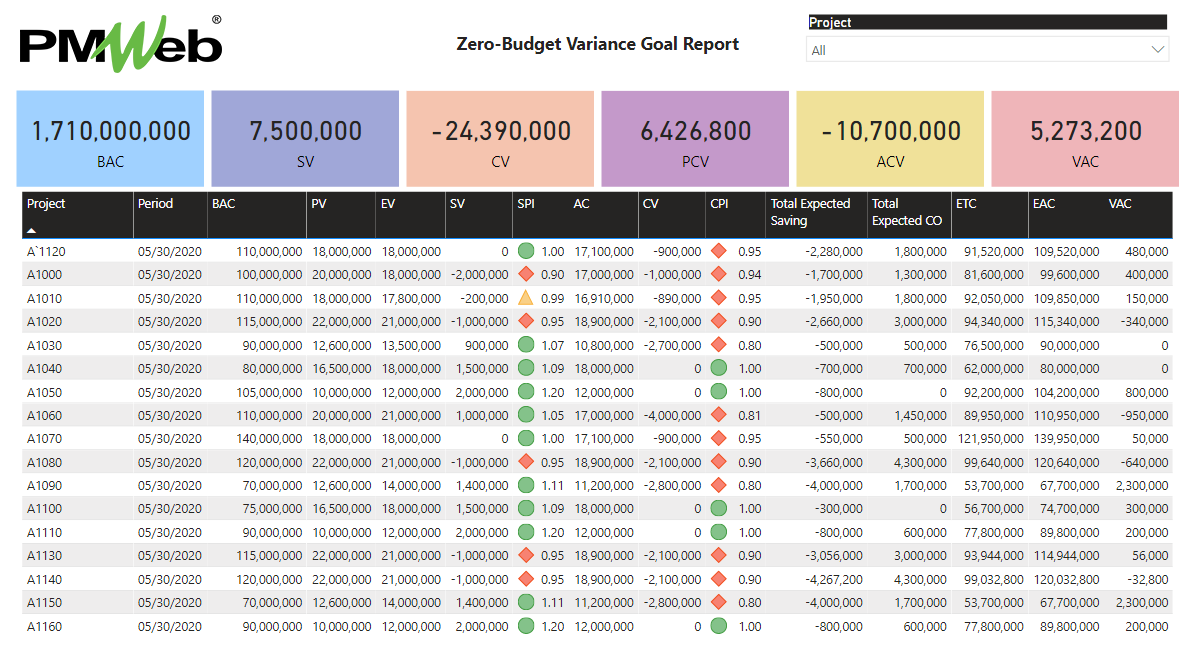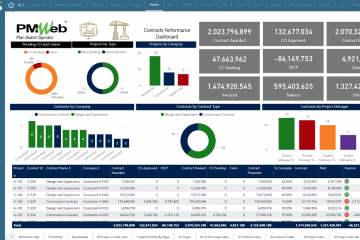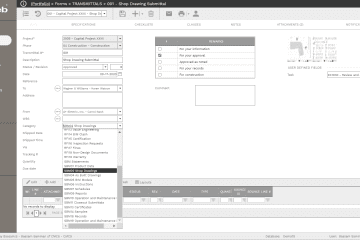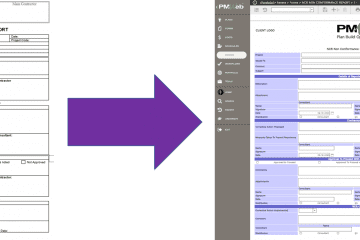Municipalities, public works departments, utilities, and other public sector entities across the globe are planning to release many capital projects to help recover their negatively impacted economies caused by the COVID-19 pandemic. Although the amount of funding to be made available for those entities will be limited, nevertheless, there is a need to maximize the number of projects that could benefit from those funds. This makes it necessary for those public sector entities to eliminate any contingency or reserve that is usually part of a project budget, ensure that each project will consume in full the allocated fiscal budget, and avoid any changes to the approved budget. In summary, they need to implement a Zero-Budget Variance goal on their capital project’s delivery.
Achieving the Zero-Budget Variance goal could be argued by many as something impossible to achieve and tends to be more theoretical than a practical goal. If this is a fact, then we should also accept the fact that no capital project can be delivered within the approved budget. A statement that would entail that the expected benefits to be realized from delivering capital projects might not be justifiable if the actual project cost is the one to be considered rather than what it was budgeted for.
Attaining the Zero-Budget Variance goal requires achieving the following four objectives. The first objective is to ensure that the approved project budget is sound and correct. The second objective is to ensure that the approved fiscal budget is spent as planned. The third objective is to ensure that payments for approved interim payments certificates are done on time, and the last objective is to ensure that no additional funds will be needed to pay for approved, must-needed change orders.
The Earned Value Method (EVM) will be used to calculate the performance measures needed for those four objectives. The purpose of using those measures could vary from their intended use or purpose in EVM, nevertheless, they provide an objective and comprehensive solution to monitor, evaluate and report the zero-budget variance goal.
Achieving those objectives requires having a real-time, single-version-of-the-truth reporting for the project cost including a budget, commitments, and actual spending. This requires having a Project Management Information System (PMIS) like PMWeb to ensure all the data and documents needed to manage the relevant processes are available on the same platform. This will provide the real-time, trustworthy information needed to monitor, control, and report on the performance of those objectives and ultimately the desired Zero-Budget Variance goal.
Objective 1: Approved Project Budget is Sound and Correct
The project owner must ensure that the project cost estimate covers the complete scope of work and detailed to the level that will be the basis for the awarded lump-sum construction contract. The cost estimate should be based on the contract drawings, specifications, and other documents that could impact the estimated project cost. The estimate should be done by qualified cost consultants who will become professionally liable for any mistakes in the provided cost estimate.
In addition, project owners should amend their contract agreements to prohibit contractors from unbalancing their bids. Further, project owners should enforce a strict pre-qualification process to ensure that only capable and qualified contractors are invited to bid on their projects.
The PMWeb cost estimate module will be used to import and document the detailed estimates provided by the qualified cost consultants. It should be noted that the cost estimate will be progressively developed and imported into PMWeb as the design development progresses.
All supportive documents such as drawings, specifications, site reports, quotes among others need to be uploaded and stored in the PMWeb document management repository and then attached to the cost estimate. The cost estimate checklist will be used to ensure that items to be verified are responded to. A workflow will be assigned to the cost estimate to formalize the review tasks before the estimate is approved.
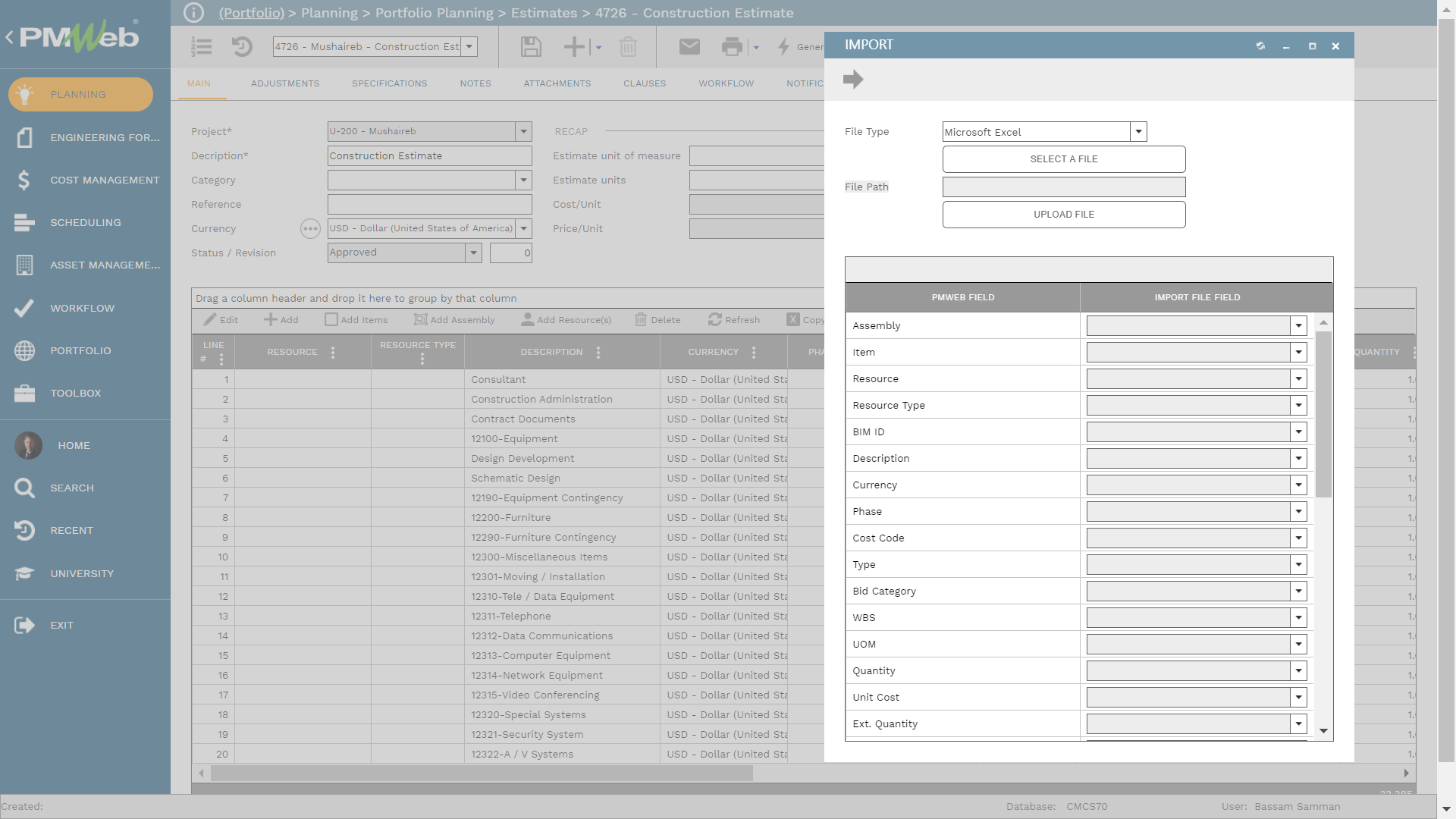
PMWeb Vendor Approver module will be used to formalize the pre-qualification of all possible bidders before they are invited to bid. The module allows defining the data and documents that each company needs to provide to enable having a comprehensive and valid assessment of their technical and financial capabilities. PMWeb allows defining extensive weight scoring to ensure that the assessment is carried out in accordance with the set criteria for qualifying bidders.
All supportive documents need to be uploaded and stored in the PMWeb document management repository and then attached to the prequalification assessment. A workflow will be assigned to the vendor approver form to formalize the review tasks before the qualification status of each contractor is approved.

The received bid proposals need to be technically and commercially reviewed by the project owner. Some public sector entities might adopt a two-step bid submission where only technically compliant bids will be subject to a financial assessment. The PMWeb procurement module will be used to compare all received online bids with the latest approved cost estimate. This will ensure the validity and soundness of the cost estimate before the construction contract is formally awarded to the successful bidder.

This information will become the basis for establishing the cost estimate accuracy which will be based on the difference between the approved cost estimate which was the basis for the awarded contract and the approved project budget, also known as Budget at Completion (BAC), and the estimated project cost at completion (EAC). This variance is known as the Variance at Completion (VAC). The objective is to have a “zero” or positive value for this measure.
Objective 2: Approved Fiscal Budget is Spent as Planned
The approved cost estimate will be also the basis for creating the project budget which will have the same total value as the awarded construction contract. This is known as the Budget at Completion (BAC). Each budget line item will be associated with the relevant project schedule activity which will be imported from the planning and scheduling tool into PMWeb. This will enable establishing a realistic planned budget spending for each fiscal year, also known as the planned value (PV) or budget cost of work planned (BCWP).
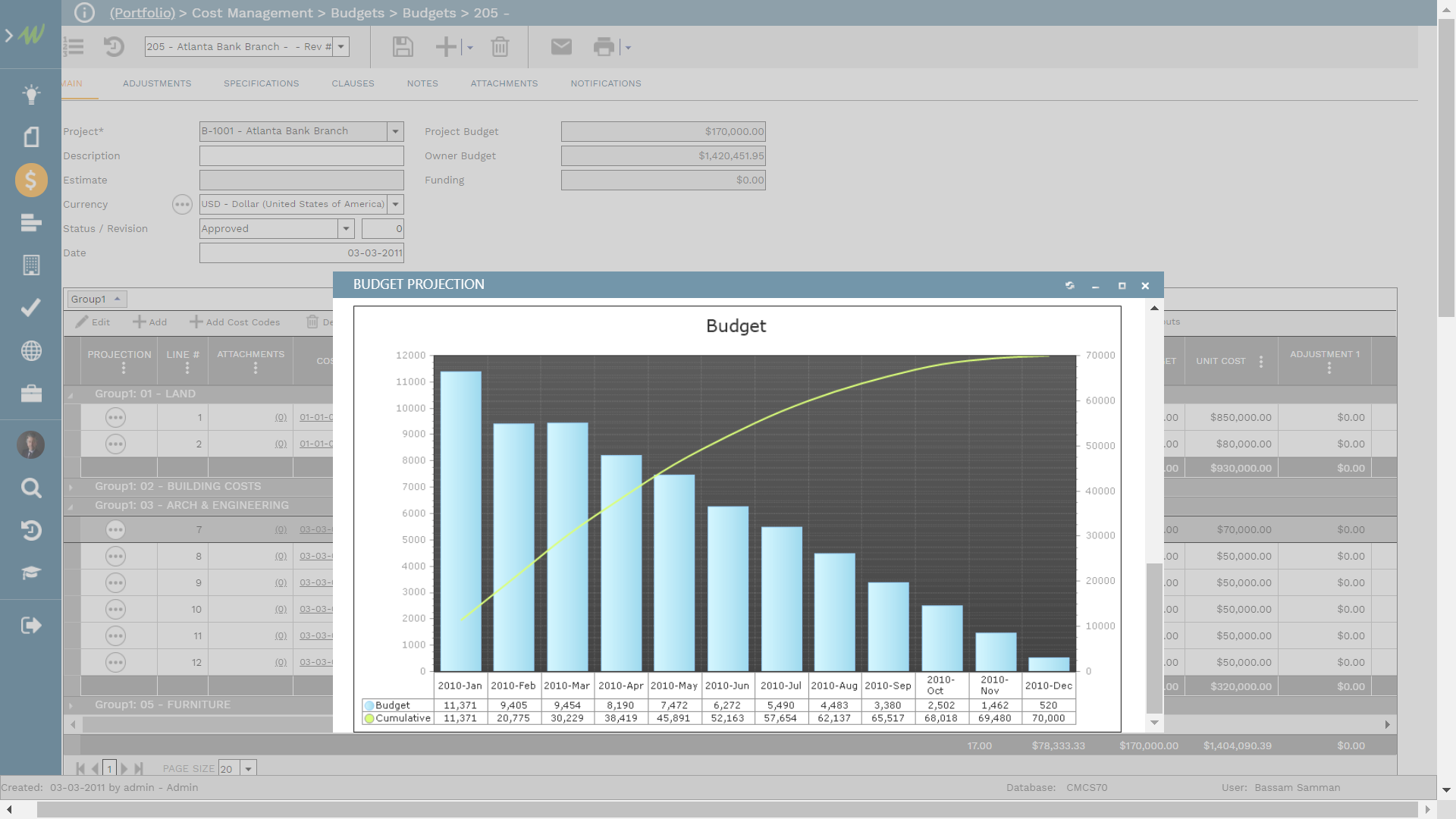
PMWeb commitment module will be used to add the details of the awarded construction contract. In addition, it will become the basis for capturing the details of the interim payment certificate (IPC) which is also known as the Earned Value (EV). All supportive documents need to be uploaded and stored in the PMWeb document management repository and then attached to the relevant progress invoice. A workflow will be assigned to the progress invoice to formalize the review tasks before approving the amount that the contractor is entitled to.
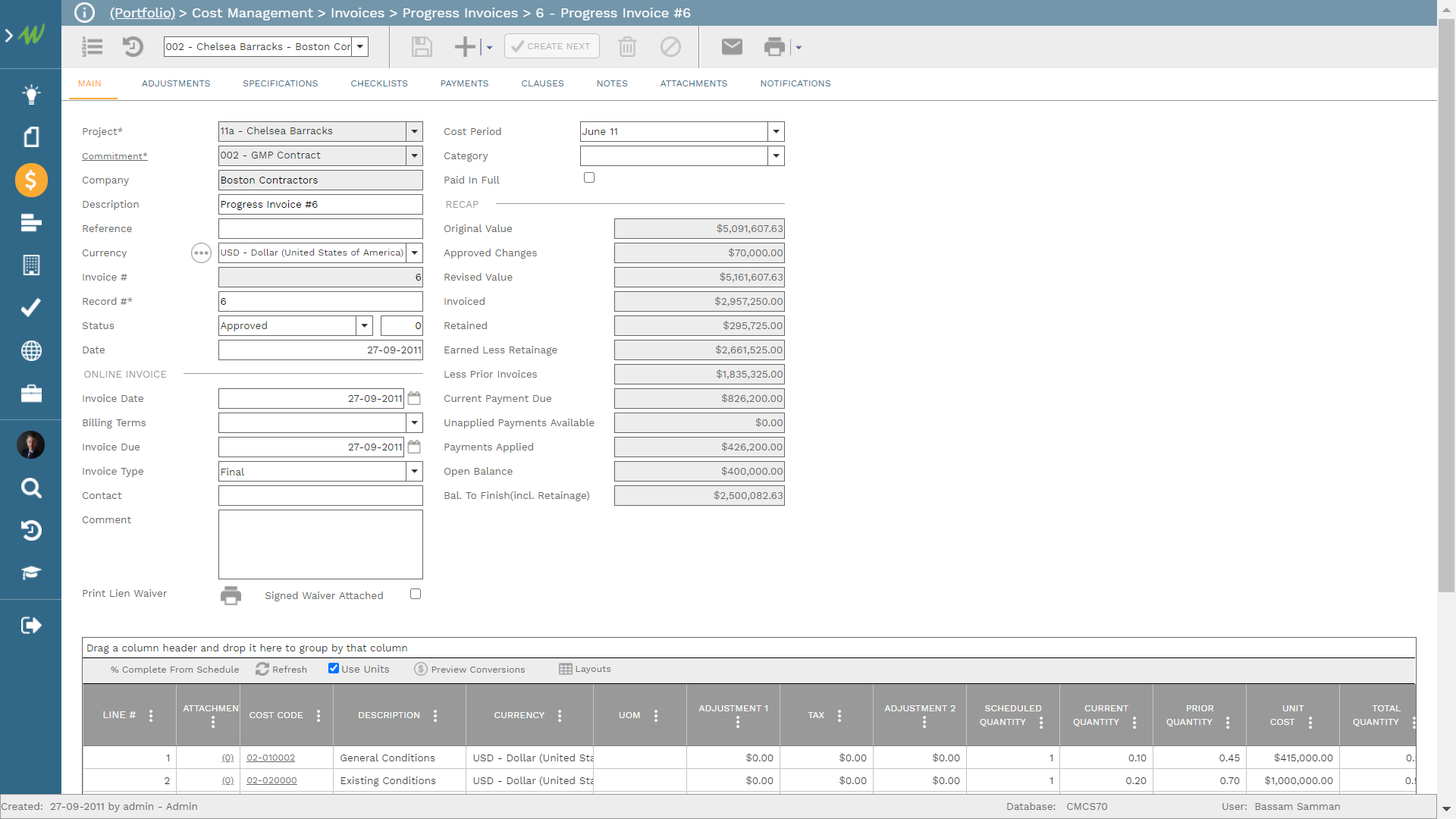
This will enable reporting any variances between the planned budget spending to date (PV) with the actual amount of the interim payment certificate (EV). This variance measure which is also known as the Schedule Variance (SV) will identify if there is any delay in spending the allocated budget for the fiscal year. The objective is to have a “zero” value for this measure. In addition, the performance measure, Schedule Performance Index (SPI) will measure the efficiency in spending the allocated budget to date. The objective is to have “1.00” as the value for this measure.
Objective 3: Payments for Approved Interim Payments Certificates is Done on Time
Almost all construction contract agreements entitle the Contractor to claim financing charges if he does not receive payment in accordance with the payment clauses of the contract. Usually, payment is due within 56 days of the issue of an interim payment certificate (IPC) by the Contractor to the Engineer or Employer’s Authorized Representative. Contractors are entitled to receive financing chargers compounded monthly on the amount unpaid for the period of delay. These financing charges are calculated at an annual rate equivalent to three percent above the discount rate of the Central Bank of the country of the currency of payment. If payment is not made within the 56-day payment period or any other period set in the contract agreement, the contractor might have two options, either to give a 21-day notice of its intention to suspend the works or after 42 days, give notice of its intention to terminate the contract. During any period of suspension, financing charges continue to accrue on the unpaid amount.
Therefore, it is important for project owners to make timely payment of the approved interim payment certificates to avoid having change order requests for the incurred finance charges and other expenses that the contractor might claim for. The payment tab of the PMWeb progress invoice module will be used to capture the actual payments made by the project owner, also known as Actual Cost (AC), against the approved interim progress certificate amount, also known as Earned Value (EV).

The variance between the Actual Cost (AC) and Earned Value (EV) will be the basis for establishing the Cost Variance (CV) measure which will identify the amounts of delayed due payments to the contractor. The objective is to have a “Zero” value for this measure. In addition, the performance measure, Cost Performance Index (CPI) will measure the efficiency in making actual payments against approved interim payment certificate amounts. The objective is to have “1.00” as the value for this measure.
Objective 4: No Additional Funds will be Needed for Approved Must-Needed Change Orders
The construction contract agreement should detail the requirements for value engineering during the construction phase. The main objective of value engineering is to provide cost savings that will be used to fund the needed change orders. In other words, each construction project must fund change orders from within the awarded contract value. The value engineering obligation will be a joint obligation to be fulfilled by the project owner, engineering and supervision consultant, contractor, and project management consultant if they are part of the project team.
The project should enforce a proactive cost-saving culture where every project entity will be encouraged to submit any idea that could save money. Access to the PMWeb potential change order module will be given to all entities that are part of the project delivery, to submit those cost-saving ideas. Similar to other PMWeb modules, all relevant supportive documents will be uploaded and attached to the potential cost savings. A workflow will be assigned to the form to ensure that every reported cost-saving idea is reviewed and analyzed before it can be approved as a cost savings and for which a negative change order will be issued. The total value of those saving ideas will be called Potential Cost Savings.
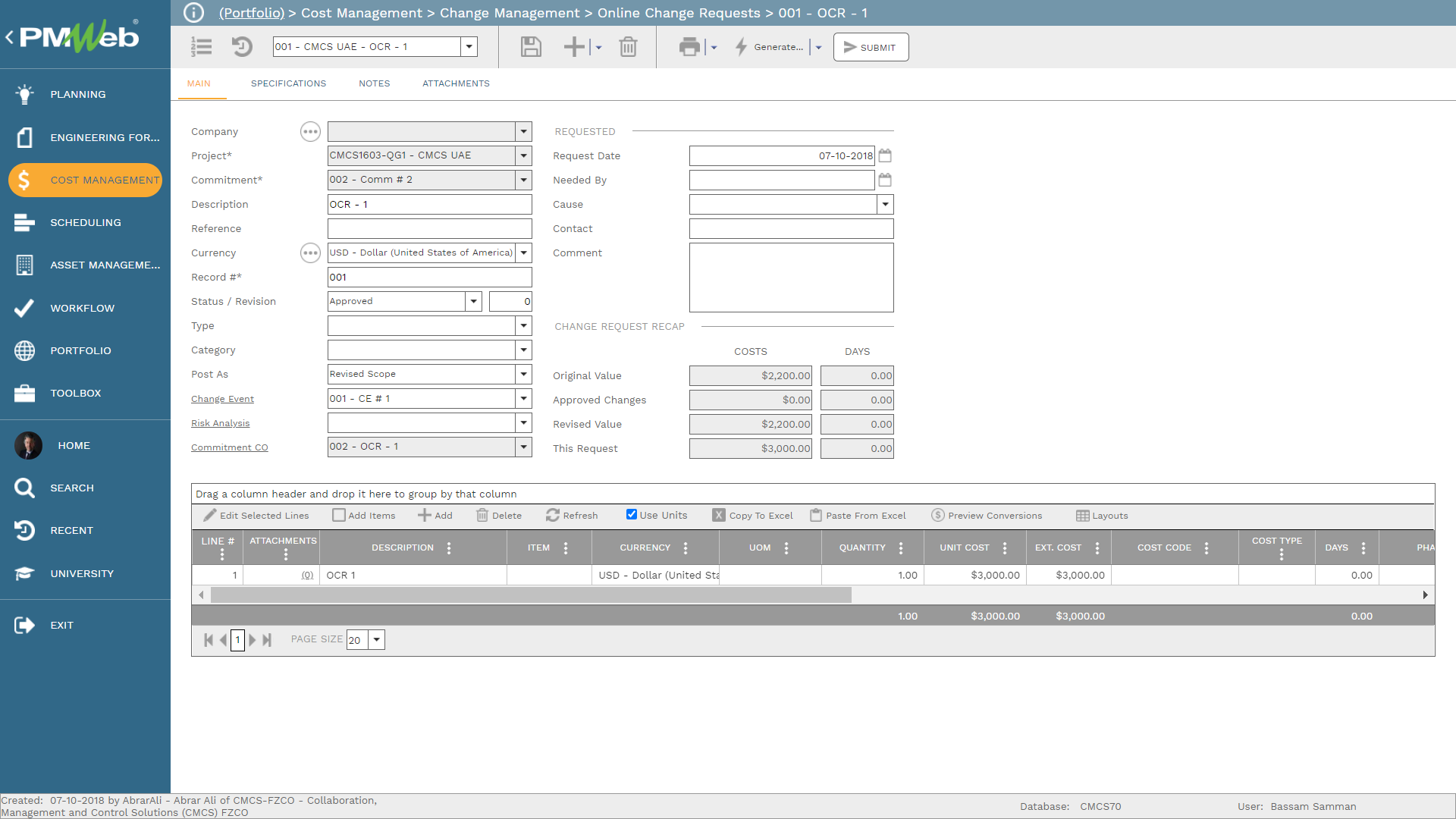
PMWeb change order module will be used to capture the details of all approved and implemented cost savings. The total value of those implemented cost savings will be called Actual Cost Savings. Like other PMWeb modules, all relevant supportive documents will be uploaded and attached to the cost savings, and a workflow will be assigned to formalize the review and approval of the cost savings.
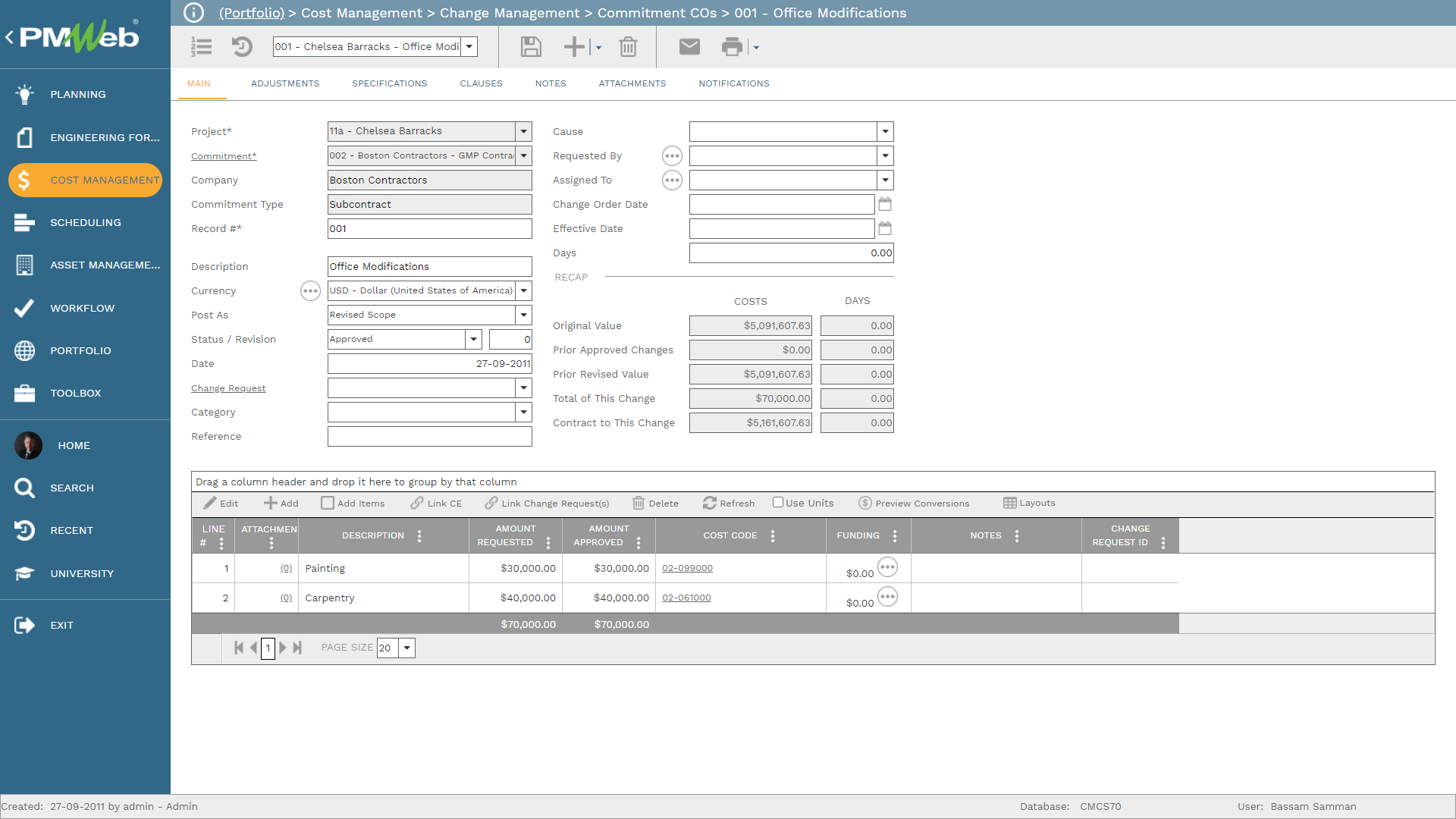
The same PMWeb potential change order module will also be used to capture the details of all potential change orders that might be needed for the project. In addition, the same PMWeb change order module will be used to capture the details of all approved change orders.
The above data will be used to calculate two performance measures. The first is the potential cost variances (PCV) which will be the difference between potential change orders and potential cost savings, while the second is the actual cost variance (ACV) between actual change orders and actual cost savings. The total of those two measures will be Total Cost Variance (TCV). The TCV amount will be added to the Estimate To Complete (ETC) for which it will be reflected on the Estimate At Completion (EAC) amount.
Monitoring, Evaluating and Reporting the Zero-Budget Variance Goal
The calculated measures for the above four objectives will become the basis for monitoring, evaluating, and reporting the zero-budget variance goal across the complete projects’ portfolio. The real-time information displayed in the dashboard will be based on the data captured in the different PMWeb forms. The dashboard reader can drill down to the data source whenever this will be needed to either verify a reported value or to have insight into the reported values.
The dashboard will include a scorecard that will display those calculated measures. For example, for each project the scorecard will include the budget or awarded contract value (BAC), planned budget spending to date up to the current period (PV), the amount of approved interim payment certificates to date (EV), the variance (SV) between the amount of approved interim payment certificates to date and planned budget spending to date up to the current period, actual amount paid against approved interim payment certificates to date (AC), variance between actual amount paid against approved interim payment certificates to date (AC) and amount of approved interim payment certificates to date (EV), total expected savings from value engineering and other cost-saving measures, total expected cost of change orders, estimated cost to complete (ETC), estimate at completion (EAC) which the sum of the estimated cost to complete and amount of approved interim payment certificates to date, and finally the variance at completion (VAC) which the difference between the budget or awarded contract value and the estimate at completion.
